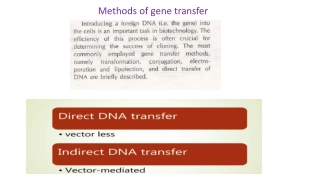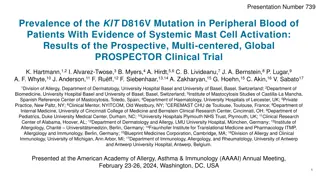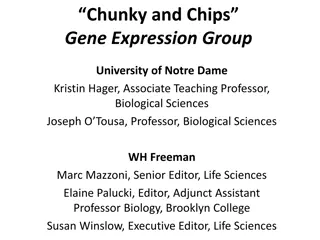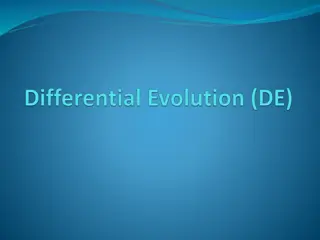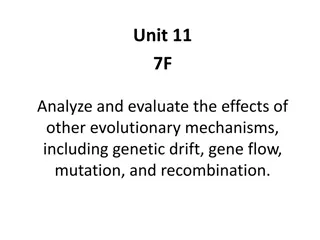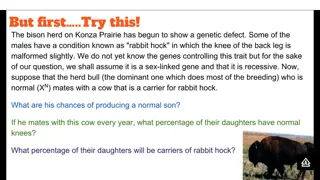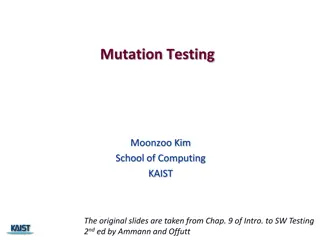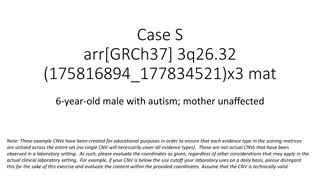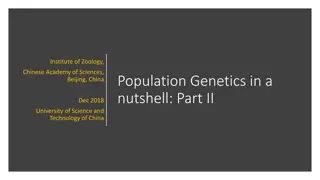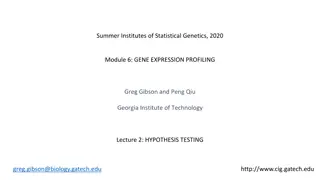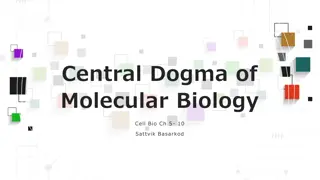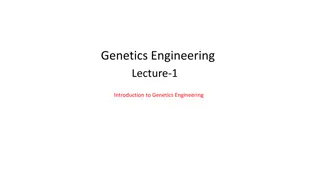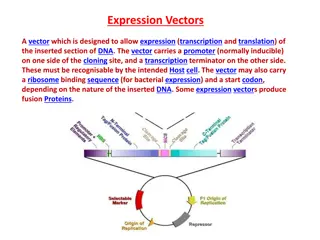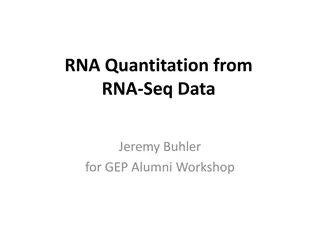Understanding Gene Duplication, Mutation, and Read Mapping in Molecular Evolution
This presentation delves into the intricate concepts of gene duplication, DNA mutation, and read mapping in the context of molecular evolution. It explains the various types of mutations, the significance of gene duplication in generating new genetic material, and the process of read mapping to align short reads to a reference sequence. Explore the mechanisms behind Homolog, Ortholog, Paralog, and Speciation in evolutionary biology.
Download Presentation

Please find below an Image/Link to download the presentation.
The content on the website is provided AS IS for your information and personal use only. It may not be sold, licensed, or shared on other websites without obtaining consent from the author. Download presentation by click this link. If you encounter any issues during the download, it is possible that the publisher has removed the file from their server.
E N D
Presentation Transcript
Gene Duplication and Read Mapping Week 7 Department of CSE, DIU
CONTENTS 1. Mutation 2. Gene Duplication 3. Read Mapping -Keyword Tree -Suffix Tree -Suffix Array -Burrows Wheeler Transform
1. DNA Mutation What and how mutation occurs, common forms
Mutation A T C C G A A T GC C G A DNA Mutation refers to sudden, random changes in DNA sequences which leads to different phenotypicexpressions. Insertion
Common Mutation Types Duplication Substitution AATCGCA AATTCGCA AATCATCGCA AATGCGCA Inversion AATCGCA AACGGCA AGCATCG ACTATCG Insertion Deletion AATCGCA AATTCGCA AATTCGCA AATCGCA
2. Gene Duplication Duplication of Genes, Homolog, Ortholog, Paralogs
Gene Duplication Gene duplication (or chromosomal duplication or gene amplification) is a major mechanism through which new genetic material is generated during molecular evolution. It can be defined as any duplication of a region of DNA that contains a gene.
Homolog, Ortholog, Paralog and Speciation Homolog -A gene related to a second gene by descent from a common ancestral DNA sequence Ortholog -Orthologs are genes in different species that evolved from a common ancestral gene by speciation* Paralog -Paralogs are genes related by duplication within a genome Speciation* -Speciation is the origin of a new species capable of making a living in a new way from the species from which it arose
3. Read Mapping Short Read Mapping, Genome Indexing
Read Mapping Mapping refers to the process of aligning short reads to and finding the starting position in a reference sequence(typicallyGenome). Short read generally are reads with a lengthof30-350 basepairs.
Genome Indexing (Keyword Tree) Stores a set of keywords in a rooted labeled tree. Each edge is labeled with a letter from an alphabet. Any two edges coming out of the same vertex have distinct labels. Every keyword stored can be spelled on a path from root to some leaf. Furthermore, every path from root to leaf gives a keyword. Keywords Apple Apropos Banana Bandana Orange
Genome Indexing (Suffix Tree) Similar to Keyword Tree Suffixes of the text are keywords Edges that form paths are collapsed Each edge is labeled with a substring of the text All internal edges have at least two outgoing edges. Leaves are labeled by the index of the pattern. Suffix tree of ATCATG
Genome Indexing (Suffix Array) More space efficient than suffix tree 7 $ 1 ATCATG$ Suffix tree index for human genome is about 47 GB 1 ATCATG$ 2 TCATG$ 4 ATG$ Sort the suffixes lexicographically 3 CATG$ Lexicographically sort all the suffixes 3 CATG$ 4 ATG$ Store the starting indices of the suffixes along with the original string 6 G$ 2 TCATG$ 5 TG$ Generate Suffix Array of ATCATG 5 TG$ 6 G$ 7 $
Genome Indexing (Burrows Wheeler Transform) Given Sequence abaaba Add $ as ending notation abaaba$ By Shifting each alphabet to the right once, generate all the rotations Lexicographically Sort all the rotations The very last column will be denoted as BWT (T)
Genome Indexing (Burrows Wheeler Transform) Given Sequence abaaba Add $ as ending notation abaaba$ Lexicographically sorted all rotations will generate BWT Matrix which will be denoted as BWM (T) Suffix Array generated from all the rotations will be called SA (T) BWM can be derived from any given BWT (T)
Genome Indexing (Burrows Wheeler Transform) LF (Last to First) Mapping Generate Burrows Wheeler Matrix for a given sequence Assign numbers to distinguish same characters Assign the numbers in a ascending manner for each character
Genome Indexing (Burrows Wheeler Transform) Find out the row starting with b1 using LF Mapping Start 1. Start from the row containing $in the First Column 2. Find out what s in Last Column of that row (here its a0) 3. Compare it with query (b1) 1. If MATCH, then -Find b1in First Column -Print row number -Terminate 1. If No MATCH, then -Find the row with that element in the First column -Go to Step 2 and Repeat
Genome Indexing (Burrows Wheeler Transform) F L Find Original Gene using LF Mapping if BWT (T) is Given Start $ a0 b0 1. 2. 3. 4. Original Gene = abaaba(Not Given) Given BWT (T) = abba$aa Store it as Last Column Draw the First Column by sorting the elements of Last Column Lexicographically Assign numbers to distinguish characters in an ascending manner Start LF Mapping from Starting Element ($) For each element found in the LAST column, write it from right to left a0 a1 b1 a2 a1 a3 FINISH $ 5. b0 a2 6. b1 a3 7. b a a a b a $
Whales and Dolphins Their ancestors had back legs once, they could walk Birds came from Dinosaurs And they both descended from Reptiles Humans have tails While they are inside the womb! It dissolves eventually. Bacterium All livings beings can be traced back to a bacterium


